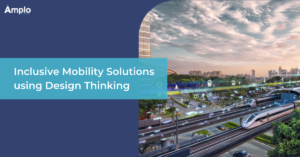Change Management Evolved: Embracing Design Thinking
| Change Management Evolved: Embrace Design Thinking’s synergy, fostering innovation and adaptability for organizational success and transformative change. |
Parkinson’s Law famously states that work expands to fill up available time. And, in a sufficiently large organization, various departments and officials end up creating work for each other and filling up all available time. That is, an organization often loses sight of the fact that it exists to serve customers, and instead it primarily serves itself. The processes and workflows at the organization evolve to meet its own wants and needs, and not that of customers.
Such an organization is urgently in need of an overhaul and refocusing of priorities. It is ripe for change management, which is usually defined as the methods and manners in which a company describes and implements change within both its internal and external processes.
Change management with design thinking
A powerful method for reorienting the organization and making it customer-centric is by leveraging design thinking, which has empathy and understanding customer needs at its core. While presenting his views on a designer’s approach to change management, leading design thinker, Dennis Hambeukers, points out that change management is not the table at which you will see a lot of designers. However, their skills and tactics can be invaluable for an organization keen on changing.
The idea becomes clearer when you look at an organization as a service that has been designed to serve its users. This aligns neatly with design thinking by placing users at the center of everything an organization does. Secondly, design thinking contributes to change management by making things concrete.
Hambeukers observes that an organization is a very abstract concept. “Strategy, governance, structure, culture etc. are all things that are hard to define and therefore hard to discuss. It is hard to determine what we mean exactly when we discuss abstract subjects.”
Designers, however, add value to the process by making things tangible or being able to visualize the problem and the solutions. They can design concrete actions, behaviors, and systems just like they design products and services.
Moreover, designers tend to be bold, always ready to experiment with new ideas and approaches. “Design is fundamentally about change. And to change things, it pays to look outside your comfort zone.” Change management can benefit from such out-of-the-box thinking and “crazy interventions” that designers bring to the table. Often, the tree needs a vigorous shaking to see what falls out, and who better than designers to shake things up with fresh, unconventional thoughts?
Advantage design thinking
Inside HR refers to a Deloitte study that found around 70 percent of change management programs fail. In most cases, the stumbling block is employee resistance to change. “Put another way, employee buy-in goes a long way toward change acceptance and, ultimately, its success.” Traditional methods of change management focus on a “common sense and logical” approach, where management starts by explaining the reasons for the change.
The management team then must be seen as the role model and a shining example of the very change it wants to see in the organization. Thirdly, it has to re-engineer processes and practices to incorporate and reinforce the change. And finally, employees need to be trained or their skills upgraded to meet the needs of the transformed organization.
This process tends to be slow and tedious, and has a high rate of failure. However, as Inside HR asserts, design thinking is human-centric and that itself makes it refreshingly different from the more analytical approach taken by traditional change management. And by involving people impacted by change, right from the beginning of the change process, design thinking delivers greater buy-in and lower resistance.
“Design thinking recognizes that people impacted by change have the best and most nuanced view, not only of the solution, but the actual problem itself.” So, when design thinking is used for change management, the organization can see from the perspective of all affected parties.
After all, to truly know your people, you need to know their problems. Change can happen only after you throw away your assumptions and absorb the experiences and knowledge of people who are actually going to be impacted by the change.









































































